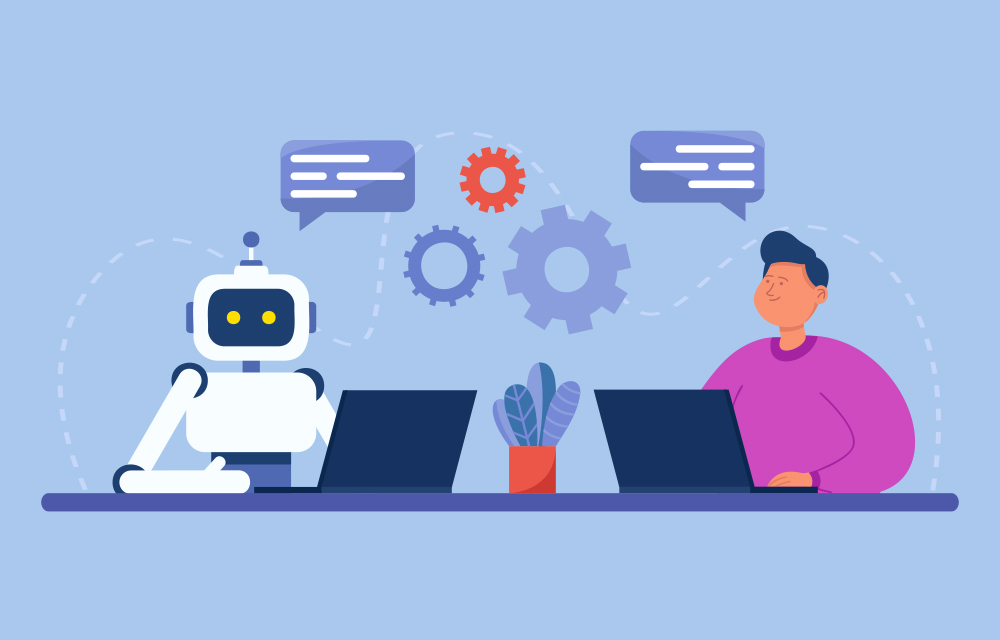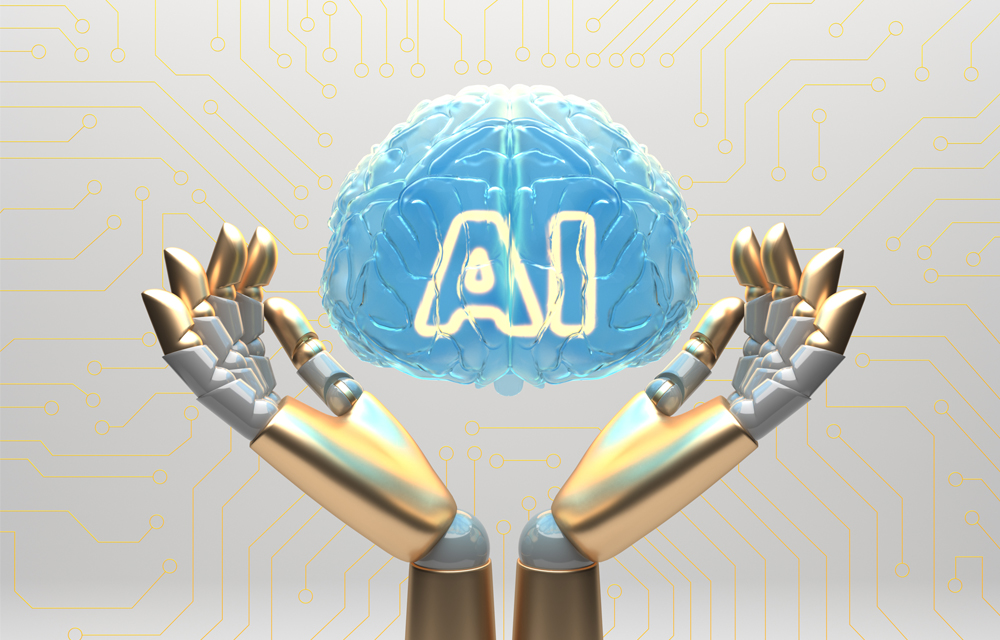According to a report by the McKinsey Global Institute, by 2030, up to 14% of administrative jobs could be aut...
Brickwork Blogs


In the dynamic landscape of the digital age, managing and delivering content efficiently has become a cornerstone for businesses, bloggers, and organizations. This is whereContent Management Systems (CMS) play a pivotal role.
A CMS is a comprehensive software solution designed to simplify the creation, editing, organization, and publication of digital content, offering a streamlined approach to managing information on websites, blogs, and other online platforms.
Evolution of Content Management: The concept of content management has undergone a remarkable evolution. In the early days of the internet, websites were static, and updating content required intricate coding skills. However, as the demand for dynamic and regularly updated content grew, CMS solutions emerged to bridge the gap, allowing users to manage their digital presence without delving into the complexities of coding.
Today, CMS platforms come in various shapes and sizes, catering to the diverse needs of users across industries. From open-source solutions to enterprise-level systems, the market offers a plethora of options, each with its own set of features and capabilities.
Significance in the Digital Era: In an era where digital presence is synonymous with success, the ability to manage content efficiently is a key differentiator. Whether you're a blogger building a personal brand, an e-commerce business reaching out to a global audience, or an enterprise managing a complex web infrastructure, the right CMS empowers you to navigate the digital landscape with agility and precision.
As we delve deeper into the world of CMS, we'll explore not only the fundamental features that define these systems but also the impact they have on user experience, content creation, and the overall success of online initiatives. Join us on this journey to uncover the essence of CMS and how it continues to shape the way we engage with digital content.
Key Features of CMS
User-Friendly Interface
Importance of an Intuitive Dashboard: A standout feature of CMS platforms is their user-friendly interface, designed to cater to users with varying levels of technical expertise. The dashboard serves as a central command center, offering an intuitive and visually appealing space where users can manage content, navigate settings, and monitor the overall health of their digital presence. The goal is to empower users to navigate the complexities of content management effortlessly.
Content Creation and Editing
WYSIWYG Editors: CMS platforms often come equipped with WYSIWYG (What You See Is What You Get) editors, enabling users to create and edit content in a format closely resembling the final published version. This eliminates the need for users to have extensive knowledge of HTML or other coding languages, making content creation accessible to a broader audience.
Multi-Format Content Support: A robust CMS recognizes the diversity of digital content. Whether it's text, images, videos, or a combination of multimedia elements, the CMS should provide seamless support for various content formats. This versatility ensures that content creators have the flexibility to express their ideas in the most engaging and impactful manner.
Content Organization
Hierarchical Content Structure: Effective content organization is a hallmark of a good CMS. The platform should allow users to structure content hierarchically, creating a logical and user-friendly navigation system. This not only enhances the user experience but also aids search engines in understanding the site's content structure for better indexing.
Tagging and Categorization: To further enhance content discoverability, CMS platforms often include features for tagging and categorizing content. Tags and categories help users classify content based on topics, themes, or any other relevant criteria, making it easier for both content creators and consumers to find what they're looking for.
User Management
Role-Based Access Control: User management is a critical aspect of CMS functionality. A good CMS provides role-based access control, allowing administrators to define different roles with specific permissions. This ensures that users have access only to the functionalities required for their respective roles, enhancing security and control over the content management process.
Permissions and User Roles: Granular control over user permissions is vital for collaborative content creation. CMS platforms typically offer various user roles with specific permissions, such as authors, editors, and administrators. This hierarchical approach enables teams to collaborate efficiently while maintaining control over content quality and integrity.
Version Control
Tracking Changes in Content: Version control is a feature that allows users to track changes made to content over time. This is particularly useful in collaborative environments, preventing accidental overwrites and providing a history of content revisions. Users can review, compare, and revert to previous versions, ensuring content integrity and facilitating collaboration.
Rollback Features: In case of errors or unintended changes, the ability to roll back to a previous version is crucial. CMS platforms often include rollback features, enabling users to restore content to a specific point in time. This provides a safety net for content creators, allowing them to experiment with updates without the fear of irreversible consequences.
Responsive Design
Adapting to Various Devices and Screen Sizes: With the increasing diversity of devices used to access digital content, responsive design is a key feature of modern CMS platforms. A responsive CMS ensures that the content is displayed optimally across different devices and screen sizes, providing a consistent and engaging user experience whether accessed from a desktop, tablet, or smartphone.
Importance in the Mobile-First Era: As mobile usage continues to rise, CMS platforms must prioritize responsive design. Mobile optimization not only caters to a growing segment of users but also positively influences search engine rankings, as search engines prioritize mobile-friendly content in their algorithms.
SEO-Friendly
Built-in SEO Features: Search Engine Optimization (SEO) is integral to enhancing the visibility of digital content. A good CMS incorporates built-in SEO features, allowing users to optimize content for search engines. This includes features such as customizable meta-tags, clean URL structures, and options for adding alt text to images.
Optimization for Search Engine Rankings: CMS platforms play a crucial role in influencing a website's search engine rankings. SEO-friendly features contribute to better visibility on search engine results pages, ultimately driving organic traffic to the site. The integration of SEO tools within the CMS empowers users to implement best practices without the need for external plugins or complex coding.

Popular CMS Platforms
WordPressOverview: WordPress stands out as one of the most popular and versatile CMS platforms globally. Initially known for its blogging capabilities, WordPress has evolved into a comprehensive content management system suitable for a wide range of applications, from simple blogs to complex e-commerce websites.
Key Features:
• Extensive Plugin Ecosystem: WordPress boasts a vast library of plugins that enhance functionality. These plugins cover a spectrum of features, including SEO optimization, e-commerce integration, and social media connectivity.
• Themes for Customization: Users can choose from a plethora of themes to customize the look and feel of their websites. This flexibility allows for the creation of unique and visually appealing digital spaces.
• User-Friendly Interface: WordPress's intuitive dashboard simplifies content management, making it accessible to users with varying levels of technical expertise.
• Community Support: With a massive user community, WordPress benefits from a wealth of online resources, forums, and tutorials, making it easier for users to troubleshoot issues and explore advanced functionalities.
JoomlaOverview: Joomla is a robust CMS that strikes a balance between flexibility and ease of use. It is suitable for a variety of websites, from small business sites to large corporate portals. Joomla is known for its extensibility and ability to handle complex content structures.
Key Features:
• Multilingual Support: Joomla excels in providing multilingual support, making it an ideal choice for websites catering to diverse global audiences.
• Access Control Levels: Joomla provides advanced access control levels, allowing administrators to define granular permissions for different user groups.
DrupalOverview: Drupal is a powerful and highly customizable CMS favored for its scalability and ability to handle complex, enterprise-level websites. It is known for its flexibility and suitability for projects requiring a high degree of customization.
Key Features:
• Modular Architecture: Drupal's modular architecture enables users to customize and extend its functionality. Modules can be added or removed to tailor the CMS to specific project requirements.
• Scalability: Drupal is highly scalable and can handle large volumes of content and traffic. This scalability makes it a preferred choice for enterprise-level websites and applications.
• Advanced Taxonomy System: The taxonomy system in Drupal allows for sophisticated content categorization and organization, making it an excellent choice for websites with extensive and varied content.
• Security: Drupal places a strong emphasis on security, and its community is proactive in addressing vulnerabilities. This makes it a trusted choice for organizations with stringent security requirements.
Challenges and Solutions
Security Concerns
Common Security Issues: While CMS platforms offer robust security features, they are not immune to security challenges. Common issues include vulnerabilities in plugins or themes, outdated software versions, and weak user passwords.
Best Practices for Securing a CMS: To mitigate security risks, users should adhere to best practices such as regularly updating the CMS and its components, using strong and unique passwords, implementing secure hosting, and regularly monitoring and auditing user access.
Customization
Balancing Customization and User-Friendliness: Customization is a double-edged sword. While it allows users to tailor their websites to specific needs, excessive customization can lead to complexity and potential usability issues. Striking a balance between customization and maintaining a user-friendly experience is crucial.
Potential Challenges in Extensive Customization: Extensive customization may lead to compatibility issues with future updates, increased maintenance efforts, and a steeper learning curve for users. It's essential to carefully evaluate the necessity of each customization and consider long-term implications.
Future Trends in CMS
As technology continues to evolve, so does the landscape of Content Management Systems (CMS). Here are some emerging trends that are shaping the future of CMS:
Artificial Intelligence Integration
AI-Powered Content Recommendations: The integration of Artificial Intelligence (AI) in CMS is revolutionizing content delivery. AI algorithms analyze user behavior, preferences, and interactions to provide personalized content recommendations. This not only enhances user engagement but also improves content relevance.
Automated Content Creation: AI-powered tools are becoming increasingly capable of generating content, from writing articles to creating visual elements. While human creativity remains irreplaceable, AI can assist in automating certain aspects of content creation, saving time for content creators.
Headless CMS Architectures
Decoupling Frontend and Backend: Headless CMS architectures involve decoupling the frontend presentation layer from the backend content management. This separation allows for greater flexibility in delivering content across various platforms and devices, as the content can be structured independently of its presentation.
API-First Approach: Headless CMS systems often adopt an API-first approach, providing robust Application Programming Interfaces (APIs) that allow developers to deliver content to different channels, including websites, mobile apps, and emerging technologies, without being tied to a specific frontend framework.
The Role of CMS in the Era of IoT
Content for Connected Devices: As the Internet of Things (IoT) continues to expand, CMS platforms are adapting to serve content to a growing array of connected devices. Whether it's smart appliances, wearables, or other IoT devices, CMS will play a crucial role in delivering relevant and context-aware content to these endpoints.
Managing Multichannel Content: CMS systems are evolving to handle the challenges of managing content across diverse channels seamlessly. This includes not only traditional web and mobile platforms but also emerging interfaces such as voice-activated devices and augmented reality applications.
Progressive Web Apps (PWAs)
Enhancing User Experience: Progressive Web Apps (PWAs) combine the best of web and mobile applications to deliver a seamless user experience. CMS platforms are increasingly incorporating features that enable the creation of PWAs, providing users with faster load times, offline capabilities, and an app-like experience directly from the web browser.
Improved Performance and Accessibility: PWAs contribute to improved website performance, reducing bounce rates and enhancing user engagement. Additionally, they enhance accessibility by offering a consistent experience across various devices and network conditions.
Block Chain for Content Security
Ensuring Content Integrity: Blockchain technology is being explored for enhancing content security and integrity. By leveraging blockchain, CMS platforms can provide transparent and tamper-proof records of content changes, ensuring the authenticity of published material.
Microtransactions and Content Monetization: Blockchain enables new possibilities for microtransactions and monetization models. Content creators can explore decentralized platforms that use blockchain for transparent and secure financial transactions, providing new avenues for monetizing digital content.
he landscape of Content Management Systems is dynamic, and these emerging trends underscore the continuous innovation in the field. As we look towards the future, the integration of AI, the evolution of headless architectures, the role of CMS in the IoT era, the rise of Progressive Web Apps, and the exploration of blockchain for content security are set to redefine how we create, manage, and consume digital content.
Staying abreast of these trends will be crucial for businesses and content creators looking to maintain a competitive edge and deliver cutting-edge digital experiences. The journey of content management is an ever-evolving one, and embracing these trends will pave the way for a more efficient, personalized, and secure digital future.
How can Brickwork help you?
Since its conception in 2005,Brickwork has successfully supported more than 14000 clients which range from Fortune 500 companies, small and medium businesses, and start-ups. At present, Brickwork is a boutique firm and we offer support with the help of experience in content management systems and SharePoint administration. Our services include but are not limited to customizing SharePoint pages, creating user groups, enabling site permissions, creating Flows using Power Automate, etc. To learn more about us,reach out today!


